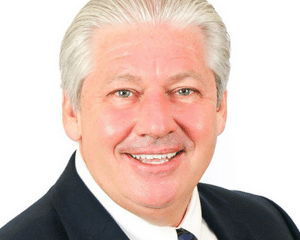Suboxone Use & Abuse Potential

The opioid epidemic, opioid addiction, abuse, and dependence are all global issues. According to the United Nations Office on Drugs, there are approximately 15.6 million individuals struggling with opioid addiction and 2.1 million have Opioid Use Disorder (OUD) according to the Substance Abuse and Mental health Services Administration. The Centers for Disease Control and Prevention (CDC) estimates the total economic burden of prescription opioid misuse alone is $78.5 billion per year.
In order to treat opioid addiction or opioid dependence, opioid replacement therapy is often recommended as a clinically effective treatment. This replacement therapy can be with either methadone or Suboxone – a combination of buprenorphine and naloxone. The buprenorphine in Suboxone is a partial agonist opioid, causing this medication to have the potential for abuse.
In this article, we take a look at Suboxone as a treatment for opioid addiction, its effectiveness, and the risks involved when taking this treatment.
What Is Suboxone?
Suboxone is the brand name, and prescription drug used to treat dependence on opioid medications and opioid drugs. It is the co-formulation of buprenorphine and naloxone.
According to the National Alliance on Mental Illness (NAMI), the combination of buprenorphine/naloxone tablets works to treat OUDs by stabilizing withdrawal symptoms experienced during the medical detox process as well as promoting recovery from opioid drug use.
The combination of the two medications is administered as a dissolvable film placed either under the tongue or on the inside of the cheek
How Does Suboxone Work?
Suboxone is particularly suited to treat those who struggle with an addiction to opioids and other prescription opioids.
When patients begin taking Suboxone, they may experience opioid effects such as pain relief but not to the extent as with full opioid agonists. Because of these opioid effects, a physical dependence can develop.
What Is Buprenorphine?
According to NAMI, buprenorphine is a partial opioid agonist which works partially like an opioid. It is approved by the Food and Drug Administration (FDA) as a Medication-Assisted Treatment (MAT) and helps in lowering the effects of opioid withdrawal symptoms and opioid cravings without full opioid potency or euphoric effects. Like other MATs used to treat a substance use disorder, it is important to couple behavioral therapy during treatment.
Although buprenorphine has the potential to be one’s primary drug of abuse, studies have found that it is not a major drug of abuse in the U.S. but rather in other geological areas. The ‘ceiling effect‘ in buprenorphine limits respiratory depression and allows a patient to take increased doses without ever feeling the euphoric effects once felt by illicit drug use. These effects of buprenorphine are intended to reduce the risk of misuse, dependency, and side effects.
Buprenorphine should always be prescribed as part of a more comprehensive treatment plan that includes counseling and other behavioral therapies to provide patients with a whole-person approach.
Begin Recovery
How Does Buprenorphine Work?
Buprenorphine produces euphoric effects or respiratory depression when taken at low to moderate dose levels. These are much weaker than full opioid agonists when taken as prescribed by a medical professional, and can be a safe and effective addiction treatment option. Any physician may obtain a waiver and notify the Substance Abuse and Mental health Services Administration of their intent to dispense and begin prescribing buprenorphine after meeting specific requirements.
According to SAHMSA buprenorphine has unique pharmacological properties that help:
- Diminish the effects of physical dependency on opioids, such as withdrawal symptoms and opioid craving
- Increase safety in cases of overdose
- Lower the potential for misuse
After the patient has discontinued or greatly reduced their opioid use, the dose of buprenorphine may be adjusted. Buprenorphine is a long-acting agent, thus, once patients are stabilized (experiencing few, if any, side effects of their opioid use), it may be possible to change dosage from everyday to alternate-day dosing.
The length of time that a patient receives buprenorphine treatment is tailored to the needs of each individual patient. In some cases, this length of time can be indefinite.
What Is The Naloxone Part Of Buprenorphine/Naloxone?
Naloxone is used to reverse the effects of opioid overdose and is an opioid antagonist. Opioid antagonists block opioids by attaching to opioid receptors without activating them.
Naloxone causes opioid-dependent patients to have uncomfortable symptoms of opioid withdrawal and medical assistance must be obtained as soon as possible after administering/receiving naloxone alone.
These symptoms help to discourage those dependent on intravenous opioids from injecting buprenorphine/naloxone.
What Are The Potential Side Effects And Risks of Suboxone?
Common side effects of Suboxone use are:
- Headache, nausea, vomiting, increased sweating, constipation, difficulty sleeping, discomfort or pain, and swelling in the arms and legs
- Signs and symptoms from opioids (i.e. shaking, stomach cramps, restlessness, irritability, etc.)
- Numbness of the mouth, redness of the mouth, and burning or tongue pain may occur from the film
- Dry mouth
- Tooth decay
- Drowsiness and fatigue
Patients experiencing any of these side effects are encouraged to report them online to the FDA‘s medical product safety reporting program, MedWatch, or by calling 1-800-FDA-1088.
Diagnostic Criteria for Opioid Use Disorder
Regular use of opioids results in lasting biological and physiological changes in the brain; even physical dependence.
According to NAMI, symptoms of opioid use disorder include:
- Inability to stop using opioids despite problems with health and relationships
- Needing more opioids to achieve the same effects
- Experiencing uncomfortable opioid withdrawal symptoms when opioid use stops:
- sweating
- shaking
- nausea
- vomiting
- diarrhea
- muscle aches
- anxiety
- irritability
- flu-like symptoms
- Spending a substantial amount of time using or finding a way to use opioids
- Having the desire to decrease the number of opioids used, but being unable to do so
- Loss of interest in favorite activities in order to use opioids
Can a Person Abuse or Become Addicted to Suboxone?
Yes. Suboxone is a partial opioid agonist meaning, like other opioids, it can cause physical dependency when taken daily for a long period of time. As a consequence, it may be tempting for patients to continue use in order to stave off uncomfortable withdrawal symptoms.
Additionally, because of buprenorphine or Suboxone‘s opioid effects, it can be misused particularly by those who have not been diagnosed with having an opioid dependency. Naloxone is added to buprenorphine in order to decrease the likelihood of misuse of Suboxone or misuse of buprenorphine.
Despite safety measures to guard against the craving for buprenorphine, illegal distribution and abuse have been reported in the U.S. according to a National Drug Intelligence Center bulletin (NDIC).
- Reports of illegal sales of Suboxone on the street, and a 500% increase in the number of emergency department visits related to Suboxone between 2006 and 2011 indicate that there could be a rising trend for Suboxone abuse.
There is also evidence for the illicit diversion and misuse of buprenorphine in instances of polysubstance misuse – with benzodiazepines as the primary drug of choice, commonly used in conjunction with Suboxone.
Suboxone was designed to meet the FDA requirements for a more diversion-proof drug for opiate addiction therapy. The naloxone contained in Suboxone is intended to guard against abuse. If someone wanted to abuse Suboxone by crushing or injecting the tablet, the naloxone in the Suboxone will prevent withdrawal symptoms; reversing the effects of opiates. Despite this, Suboxone can still be abused and is more likely to be abused by individuals who are addicted to low doses of opiates.
Signs That Someone Might Be Abusing Suboxone
Signs that someone might be abusing Suboxone are very close to the criteria for OUD as discussed above.
Additional signs may include:
- Mixing Suboxone with alcohol.
- Secrecy and dishonesty about the use of Suboxone.
- Using Suboxone as a form of medication without having a prescription.
- Changes in presentation, such as slurred speech, poor grooming, slow patterns of thinking or responding, or significant memory issues.
Suboxone Withdrawal and Detox
Discontinuing the use of Suboxone could lead to potential withdrawal effects and other unforeseen medical issues such as increased physical pain that was managed by the medication. It should therefore be under the supervision of a medical professional or physician.
If you stop using Suboxone, like many other opioids, you may experience withdrawal symptoms. These symptoms happen due to your body adjusting to not having the substance present.
Some common Suboxone withdrawals include the following:
- chills and fever
- sore muscles
- depression or anxiety
- irritability
- cravings to use Suboxone
- headache, nausea, or vomiting
- trouble concentrating
A physician and clinical team at an addiction treatment facility can initiate a medical detox procedure to taper the Suboxone dosage slowly so the patient can adjust. In cases where Suboxone abuse occurs in conjunction with other substances, such as alcohol, additional detox measures may need to be implemented.
A physician-advised, comprehensive, medical detox ensures that the patient can safely withdraw from all substances of abuse and physical dependence.
Treatment Options for Suboxone Abuse
Drug abuse can be difficult to overcome. Suboxone is an effective treatment for opioid addiction when used responsibly. Taking Suboxone too frequently, in excessive amounts, or without a prescription could be unsafe. If you feel you or someone you know is struggling with Suboxone use and needs help recovering from opioid addiction, entering into a treatment program could be lifesaving. Our team at Riverside Recovery of Tampa is available to provide you with multiple levels of addiction treatment options.
Treatment for opioid use disorder may include the following at our facility:
- Medical detoxification
- Residential treatment
- Individual therapy
- Family Counseling
- Peer support groups
- Aftercare programs
National Alliance on Mental Illness–Buprenorphine/Naloxone (Suboxone)
National Library of Medicine–Yokell, M. A., Zaller, N. D., Green, T. C., & Rich, J. D. (2011). Buprenorphine and buprenorphine/naloxone diversion, misuse, and illicit use: an international review. Current drug abuse reviews, 4(1), 28–41. https://doi.org/10.2174/1874473711104010028
Substance Abuse and Mental Health Services Administration–Buprenorphine
